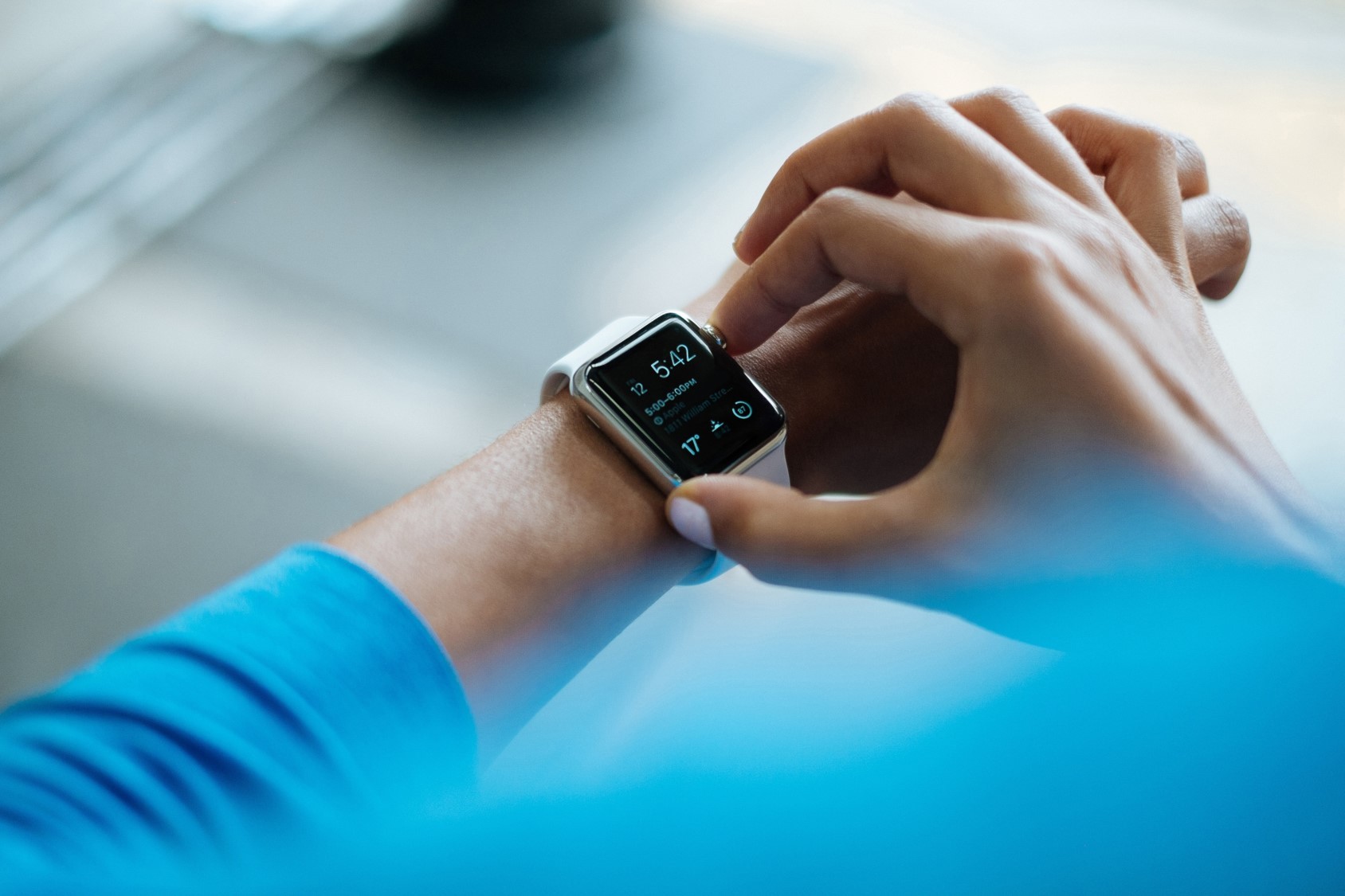
Wearable Medical Devices – And All That Data They Bring!
When I got my first fitness tracker, a smart wearable device that was easy to strap on my wrist during my workout and walks, I felt like the ultimate tech geek. It could track my heart rate, count my steps, measure calories burnt and event monitor my sleep patterns. And back then this was a revolutionary step towards fitness and good health.
Today wearable devices are gathering and curating a phenomenal amount of health-related data providing real-time information about the user’s health. In addition, the hardware market is rapidly evolving with new state-of-the-art medical devices, apps, and other programs, offering us the ability to monitor everything from glucose levels to UVA exposure to medication schedules. We are even seeing a definite move towards the use of wearable devices in clinical trials to collect results from patients to improve understanding of how patients respond to treatments.
The wearable medical technology market continues to expand as consumers are increasingly persistent about using technology to track their health. According to research a whopping 80% of consumers want to wear fitness technology to monitor their health and are willing to pay for subscriptions. Smartwatches, like Apple Watch, and fitness trackers, like FitBit, hare the most popular among consumers and will continue to dominate the wearables market. According to an IDC research, by 2023, watches will account for nearly 50% percent of the entire wearables market, while the overall global wearables market will grow to USD 54 billion. The more accurate information generated by wearables offer insurers more opportunities to personalize health care plans, that save employers and consumers a lot of money.
Why wearables appeal to businesses
Businesses can decrease health care costs through personalizing insurance plans by providing employees with wearables. For example, in 2019 Omron launched HeartGuide, the first wearable blood pressure monitor which looked like any other smart watch but functioned as an oscillometric blood pressure monitor. It stores a user’s blood pressure and daily activity, and then transfers the data to a mobile app from where the readings could be reviewed. This data would allow the health insurance firm to recommend treatment and a suitable insurance plan. John Hancock, a leading US-based life insurer, has already announced that it will no longer sell traditional life insurance policies, replacing them with interactive policies that track fitness and health data through wearables, offering discounts to policy holders who regularly meet exercise targets. They also offer gift cards for workouts and healthy food purchases, while charging higher premiums to customers with high-risk habits.
Better medical treatment through wearables
By tracking data from wearables, healthcare providers are able to personalize treatment plans and deliver better healthcare. Rather than relying on possibly incomplete or delayed reports from patients, doctors can view data from wearables data in real-time and make a more informed analysis. Devices can also alert users when it’s time to take medication and even alert doctors when a prescribed schedule is not followed.
Obviously, there are a lot of wearable medical devices that have the potential to provide useful patient data, especially for patients who have chronic medical conditions. But how is all that data to be managed so that healthcare professionals extract only the nuggets of value in all that data? Such wide-ranging benefits of monitoring health using data from wearable devices can only have a positive impact when a comprehensive data analytics solution is used to accumulate patient data and process it for individual patient care needs.
If doctors can get the right kind of data, the information collected from these wearable devices holds the potential for more accurate diagnoses, personalized treatments, and better outcomes. However, in this context more data does not directly mean more value. So how can healthcare firms manage this data?
Mining and analyzing data
Technology partners can help healthcare firms present this data to both patients and physicians in a way that’s both meaningful and actionable. A PDF file here, a report of steps taken daily here, a blood glucose app output there. Doctors are already frustrated with their EHR systems, so adding more data to the pile without proper support will eventually cause the entire process to collapse. The smart way to manage this data deluge is with technological assistance such as algorithms and machine learning (ML) programs that will take all this data, make sense of it, and then present valuable insights to the doctor.
Analytics can help interpret the data churned out by wearables and thus improve overall patient outcomes and community health. These devices are usually monitoring constantly, so any analytics solution should be robust enough able to handle the huge amount of data. Demographic, usage, and consumer expectation data is going to be pouring in from these devices, which will then have to be analyzed to churn out insights. The key requirements from any data analytics solution will be speed and the ability to store a continuously growing amount of data while analyzing it using pattern recognition and machine-learning-based predictions.
Wearable data is already ballooning to huge proportions and the challenge will be not just to analyze it, but also to offer personalized insights. For example, by understanding the data captured by wearable technologies, brands can create personalized marketing offers for each consumer. Using advanced analytics, wearable device companies can realize the potential that each device offers to the user and to healthcare professionals. Remember that any collected data is only as good as the action that it propels.
Having said that, do keep in mind that wearable devices collect a lot of data that’s stored either on your smartphone or stored downstream on a cloud. And this data is worth ten times that of a credit card on the black market. So while a lot of us could be using this tool to track and enhance our health, imagine if that data was stored carelessly and could be hacked by a malicious third party. Privacy policies of wearables for healthcare are vague and ever-changing, ranging from “We respect your privacy” to “We may share your information with third parties…”. Basically, in most countries, expect that wearable device manufacturers can legally share your sensitive data without your permission.
Tech companies and healthcare providers will need to explain clearly where and how this data is being used if consumers are to sign up. Improving healthcare using wearable devices should be contingent on patient data being anonymized. Patients must be educated on how their personal data will be used. As we wait for wearable technologies to mature and collect better data, it would also be a good time to figure out where and how information is stored, whether and how it might be used and disclosed, who has access to it, and what safety measures are in place to protect it.
Related Posts
AI Toolbox: Creative Content Beyond ChatGPT & BARD
Introduction: In the dynamic landscape of artificial intelligence (AI), ChatGPT and BARD have garnered significant attention for their capabilities in natural language processing and music composition. However, a rich tapestry of AI tools exists...
Ethical Considerations in Generative AI: Ensuring Fair and Responsible Data Analytics
Introduction Generative AI, a transformative subset of artificial intelligence, is revolutionizing data analytics and machine learning. It empowers machines to generate data, images, and text that mimic human creativity. While the potential of...
Building a Better Future with Digital Public Goods
The world is on the cusp of digitization! In this era of digitization, we have transformed the way we communicate, interact, and access information. It has not only changed our personal lives but also has brought an evident transformation in the...
The Role of Artificial Intelligence in Cyber Security
In an era characterised by rapid technological advancements and increasing digitalisation, the field of cyber security faces an escalating and ever-evolving threat landscape. As cyber threats become more sophisticated, organisations must employ...
TinyML: The Future of Edge AI
Artificial intelligence (AI) has been a hot topic in recent years and with good reason. AI has the potential to transform countless industries and improve our lives in numerous ways. However, as powerful as AI can be, it also requires a lot of...
The Evolution of Federated Learning
Uber settled an inquiry into a data breach that exposed the personal data of more than 5,00,000 drivers in 2016 by paying $148 million. A GDPR breach resulted in a $57 million fine for Google in 2020. On-growing data privacy and data breach issues...
Subscribe To Our Newsletter
Lorem ipsum dolor sit amet, consectetuer adipiscing elit. Aenean commodo ligula eget dolor. Aenean massa. Cum sociis natoque penatibus et magnis dis parturient montes, nascetur ridiculus mus

Company
About us
Careers
Contact
Awards
Blog
Offerings
Strategy & Consulting
Managed Services
Solutions
Digital Public Goods
Solutions
Data Solutions
Industry Solutions







